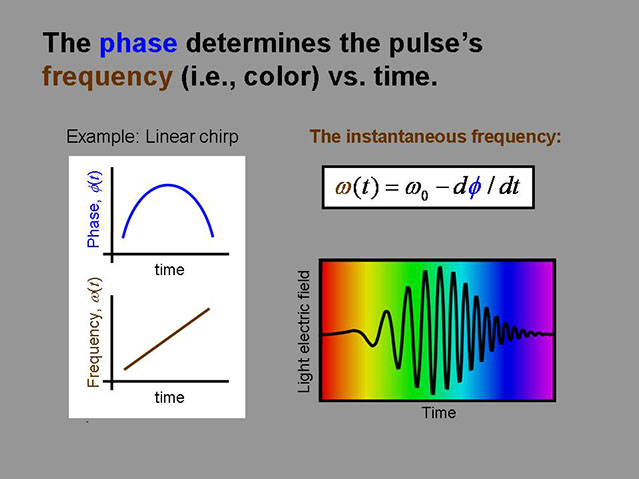First, we're all familiar with the concept of the intensity of light and its variation in time. But what's the phase vs. time, and why do we need to measure it?
Light is a wave, and the phase is the instantaneous value of the even faster approximately sinusoidal variation of the light's electric (and magnetic) field.

If the variation of the light's electric field is perfectly sinusoidal, then the light is said to contain only one wavelength (and is monochromatic). But light, especially ultrafast light, can vary wildly in color on very fast timescales. The colorful plot shows a pulse that scans from red to purple in just a few femtoseconds.
For additional pictures of chirped pulses, notice that the "Prev" and "Next" buttons below are, in fact, idealized snapshots (from the side) of chirped pulses! If the pulses are propagating to the left, then the "Prev" button is a positively chirped pulse, and the "Next" button is negatively chirped.

